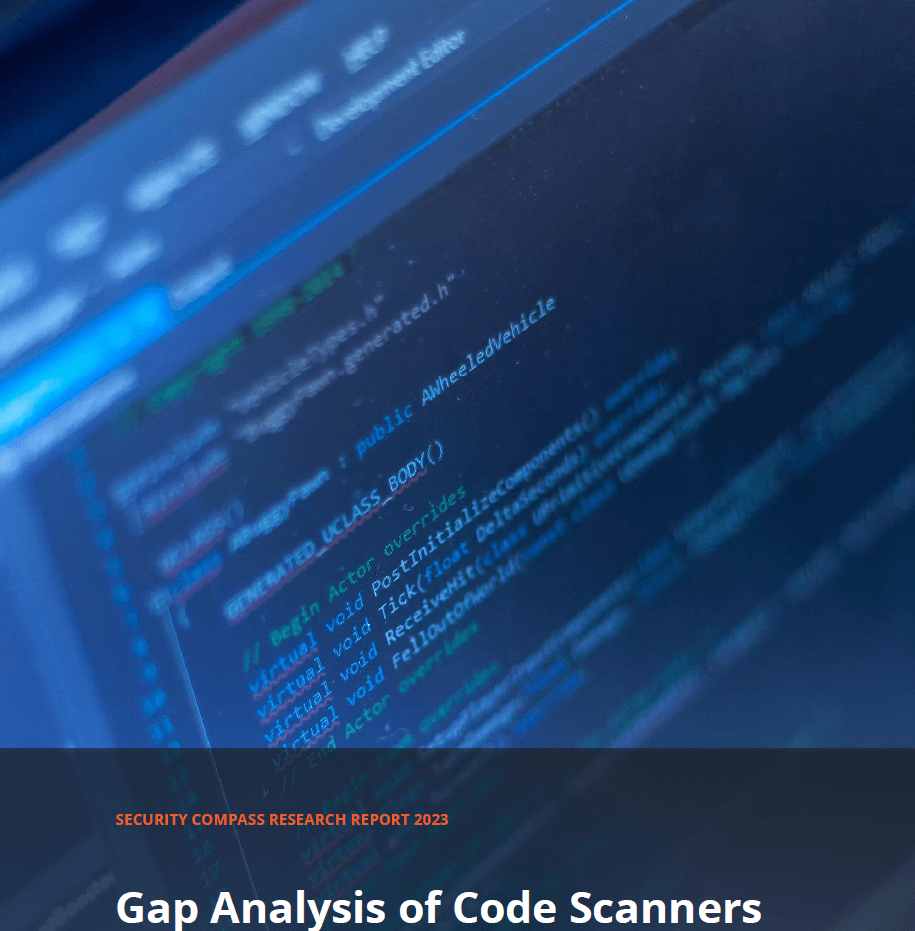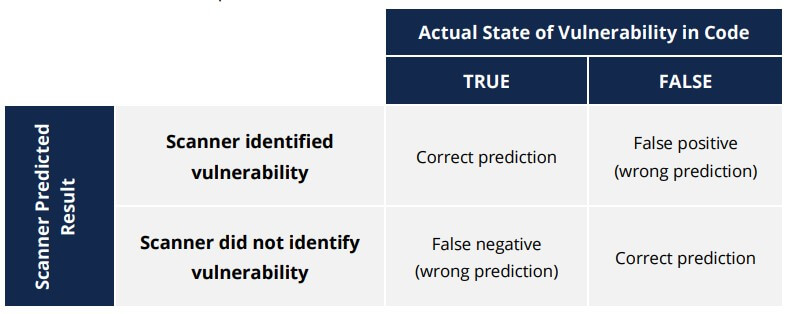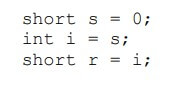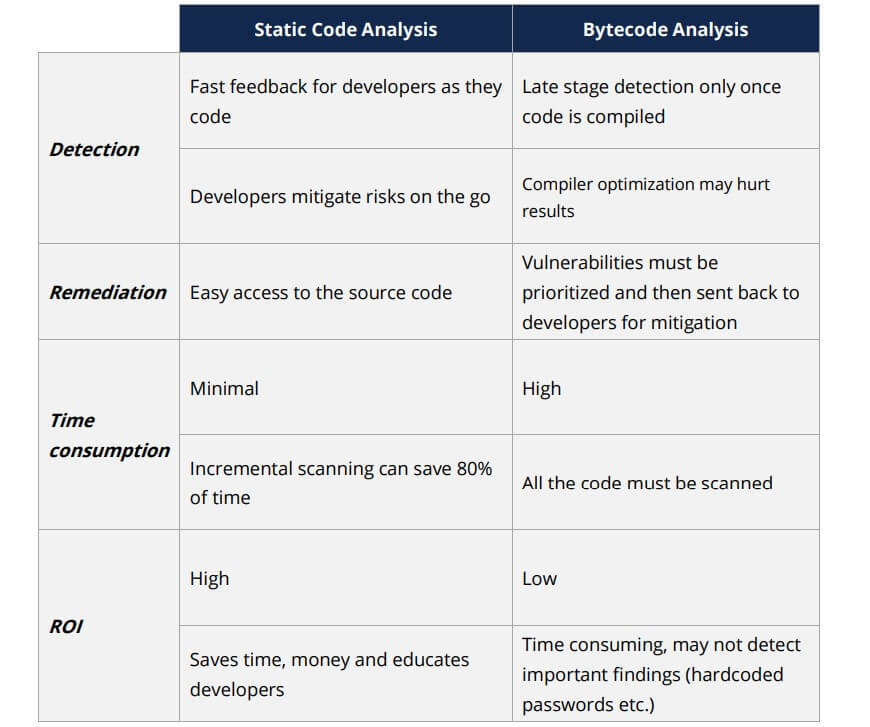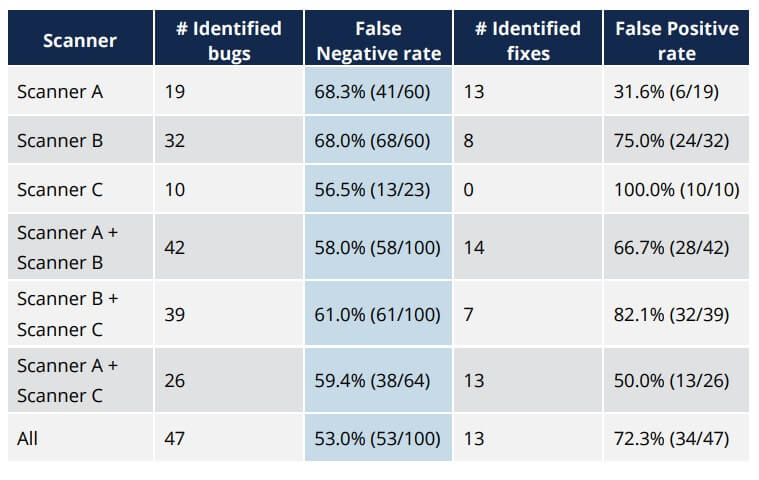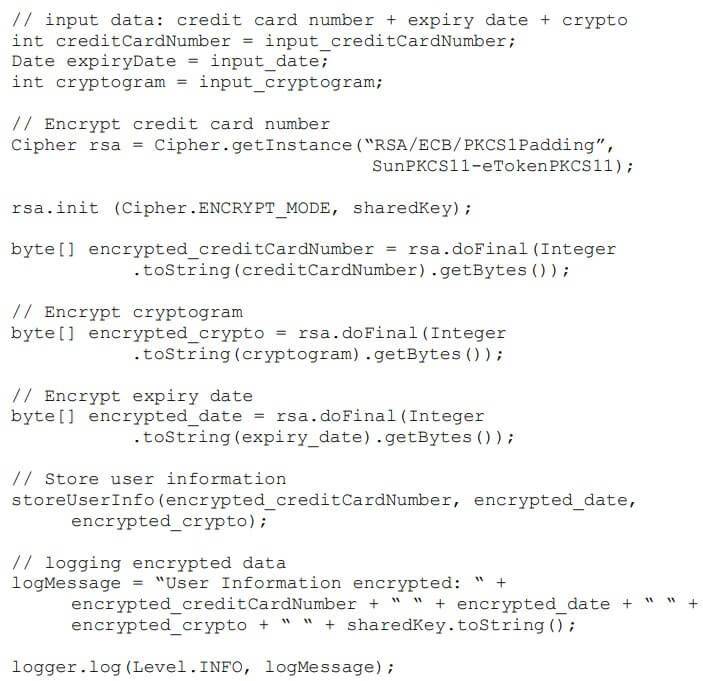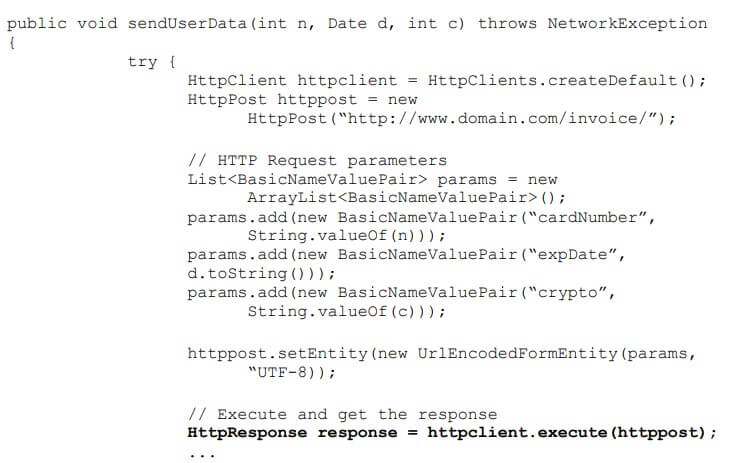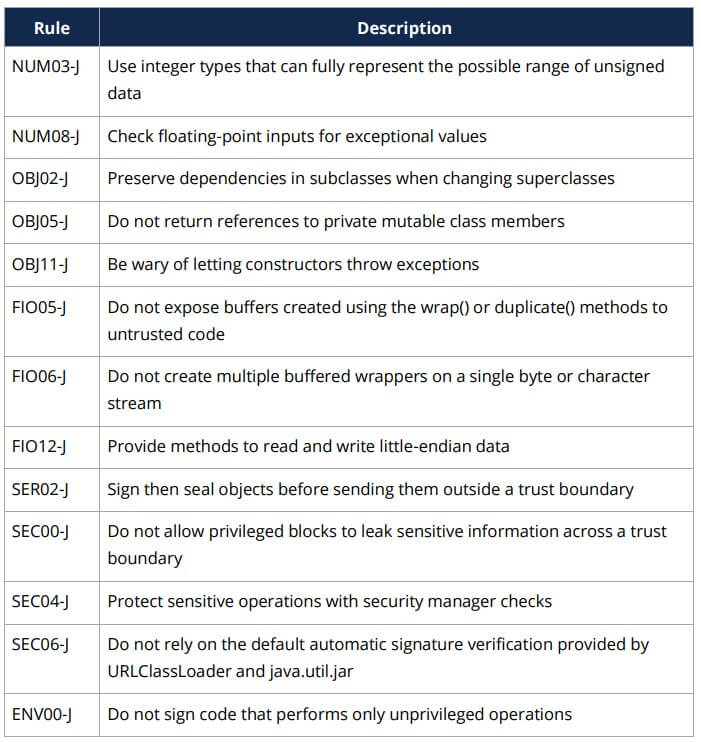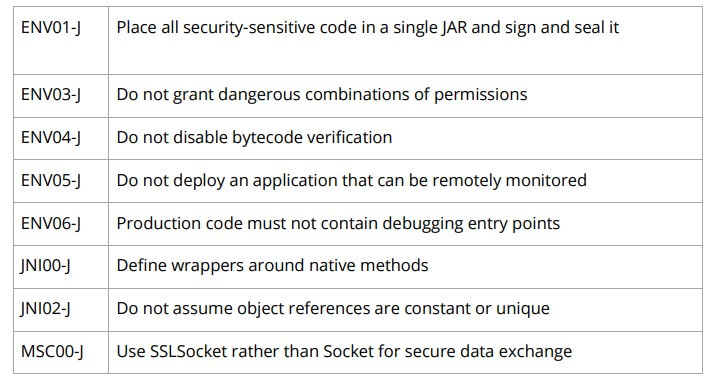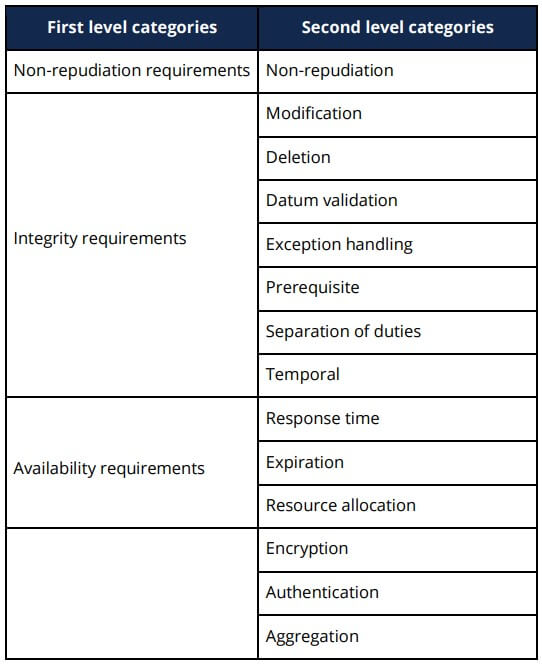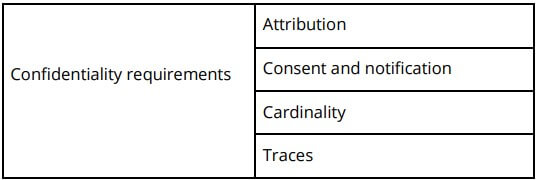Static analysis is a key part of conducting secure software development today. Catching errors before deploying into a production environment can help reduce cost and improve quality. Because of the importance of this activity, a number of great companies have produced products to help address this problem.
There are many different types of static analysis tools. For the purpose of this paper, we are focused on the subset of tools called Static Application Security Testing (SAST) tools. These tools are useful in the development stage where code is analyzed to identify security vulnerabilities early in the lifecycle. Within this subset of tools, there exists a range of sophistication — from simple lexical analysis to symbolic analysis and modeling.
Many organizations feel that the exclusive use of code scanners is sufficient to ensure security and compliance of their applications. As this paper will show, this is not the case. In fact, there are many categories of problems that static analyzers are not capable of addressing. As (Chess, 2007) explains, “All static analysis tools are guaranteed to produce some false positives or some false negatives.” (Zhioua, 2014) agrees that “…these tools fall short in verifying the adherence of the developed software to application and organization security requirements.” We intend to show the various categories of issues scanners cannot catch — from intent to compiler optimization.
Our goal with this research is not to downplay the importance of code scanners; it is quite the opposite. Our aim is to continually educate software developers, managers, directors, and CISOs through a convincing argument that scanners alone can not catch all vulnerabilities. “Although some elements of a design have an explicit representation in the program…in many cases, it is hard to derive the design given only the implementation” (Chess, 2007). We believe scanners need complementary tools and/or processes at a higher level of abstraction. That is the realm of Secure Software Requirements Management (SSRM).
HOW SCANNERS WORK
Before attempting to analyze the gaps with scanners, it is important to understand how they work. In a nutshell, they all work in a similar way. As Chess aptly summarizes, “They all accept code, build a model that represents the program, analyze that model in combination with a body of security knowledge, and finish by presenting their results back to the user” (Chess, 2007). According to (Zaazaa, 2022), common techniques used in scanners include: • Data flow analysis • Control flow analysis • Symbolic analysis • Taint analysis
Based on a series of logical security tests, a scanner will produce a result to indicate whether or not a vulnerability exists in the code. This may or may not correspond to the truth. If the scanner predicts the actual state of the code, it leads to a correct prediction. In those cases where the scanner did not catch an actual error, this is referred to as a false negative. If the scanner identifies an error where none actually exists, it is a false positive. The goal of a scanner is to minimize both false positives and false negatives.
In essence, we have four possibilities:
Data Flow Analysis
This scanner technique traces the flow of data through the code. “It aims at representing data dependencies in the source code and allows to track the effect of input data” (Zhioua, 2014).
Let’s consider a simplified scenario where a web application accepts comments as user input and stores them in a database, later retrieving and displaying that information on a webpage. Imagine that an attacker manages to inject malicious code into one of the comments.
By performing data flow analysis on the application, we can trace the flow of this user input through the different components of the system. The analysis can help identify if and where this tainted data (malicious code) is used or propagated.
If the data flow analysis reveals that the tainted data flows directly into a function responsible for generating the webpage content, there could be a security vulnerability. In this case, the application might be vulnerable to a cross-site scripting (XSS) attack.
With this knowledge, developers can take appropriate measures to mitigate the vulnerability, such as properly sanitizing or escaping user input before displaying it on the webpage, or implementing security mechanisms like input validation and output encoding to prevent the execution of malicious code.
By conducting data flow analysis, potential security issues like information leakage, injection attacks, or unauthorized data flows can be identified and addressed, helping to ensure the security and integrity of the software system.
Using a symbol table, it is also possible to determine whether the values for a given data variable are consistent within the bounds of that type. Any type mismatch or out of bounds exceptions can be caught.
When tracking the flow of data through code, there is a potential gap with programmer intent. For example, (Aspinall, 2016) suggests the following code snippet will generate a false positive around “possible loss of precision”:
Here, reassigning the value of s to an integer variable trips the scanner into thinking the value cannot be assigned to a short data type subsequently.
Control Flow Analysis
Keeping an application in a predictable state is an important attribute of secure software. Using a directed graph, it is possible to determine the program flow across various modules within the application. The goal is to ensure each transition is accounted for and leaves the application in a predictable state. “A program’s control flow graph (CFG) is used to determine those parts of a program to which a particular value assigned to a variable might propagate” (Parasoft, 2011).
A sample CFG looks something like the following:
The CFG can be constructed using the combination of an Abstract Syntax Tree and adding control flow information.
In today’s event-driven environments, the flow of control across an application grows significantly with each new module or component. Best practices in software development encourage modular programming and some categories of applications such as microservices encourage the use of hundreds of components. Working through each of these flows can be very time consuming and prevent teams from achieving their target of fast delivery. In discussing Control Flow Analysis, (Barbosa, 2012) explains “In general, the problem of discovering all the possible execution paths of a code is undecidable. (cf. Halting problem)”. Elsewhere, (Ernst, 2003) explains that “Because there are many possible executions, …[static analysis]…must keep track of multiple different possible states. It is usually not reasonable to consider every possible run-time state of the program; for example, there may be arbitrarily many different user inputs or states of the runtime heap.”
In cases where code cedes control to a third party module where code is not available, scanners will not be able to address the security risk. “Sometimes there is clear evidence of a vulnerability in the HTTP response, such as a cross-site script in the HTML. But usually the evidence is less clear, such as when you send a SQL injection attack and the response is a 500 error. Was there a SQL injection? Or did the application just break?” (Williams, 2015).
This problem is further complicated when the third party uses custom objects. “Even if you know that the request is JSON or XML and you have some kind of schema for the API, it’s still exceptionally difficult to provide the right data to automatically invoke an API correctly…Applications using Google Web Toolkit (GWT), for example, has its own custom syntax and can’t be scanned without a custom scanner” (Williams, 2015).
Symbolic Analysis
This technique translates the code into a model that can be analyzed mathematically for correctness. “Symbolic analysis is deemed to be useful in transforming unpredictable loops to predictable sequences, and is mainly used for code optimization…” (Zhioua, 2014).
While symbolic analysis can help address code complexity, it does not account for compiler optimization (which we will discuss later). Even if a particular implementation of symbolic analysis can help reduce security vulnerabilities, the compiler used to construct a production build may have a completely different set of optimizations thereby leading to false positives and negatives.
Some organizations try to mitigate this risk by running bytecode analysis instead. (Masood, 2015) explains this position, “For the modern IL (intermediate bytecode) based languages, most of the new static analysis tools perform the byte code analysis instead of looking at the source files directly. This approach leverages compiler optimizations, and provides best of the both worlds.” However, as (Curran, 2016) points out, this has some consequences:
Bytecode analysis is a late stage detection strategy which can make regression scaling difficult. It also introduces the possibility of additional false negatives when it comes to hardcoded passwords.
Taint Analysis
Taint Analysis attempts to take advantage of the data flow from user input into vulnerable functions. From a security perspective, the user input is ideally sanitized before reaching these vulnerable functions. By tainting the user input, a trace is done to determine the impact on these vulnerable functions. If the vulnerable function is impacted from a security perspective, the variable is flagged.
WHY A SCANNER WILL ALWAYS GENERATE FALSE POSITIVES AND NEGATIVES
1. It is highly unlikely for someone to create a static analyzer that catches all known security vulnerabilities.
In computability theory, there is something called the Halting problem. In a perfect world, we are able to execute a program from the start state through the termination (or Halt) stage. As software becomes more complex, this becomes non-deterministic. As an example, given a program written in some programming language, will it ever get into an infinite loop or will it always terminate (halt)?
This is an undecidable problem because we cannot have an algorithm which will tell us whether a given program will halt or not in a generalized way. According to Rice’s Theorem, any non-trivial semantic properties of programs are undecidable. The assumption made by scanners, however, is that we can execute code from start to finish predictably.
As a result, static analyzers can suffer from problems such as nontermination (the inability to accurately predict that code execution will end as expected), false alarms (false positives), and missed errors (false negatives) according to (Nunes, 2018 and Golovyrin, 2023). All static analyzers sit somewhere between sound and complete. (Blackshear, 2012) clarifies that “A sound static analysis overapproximates the behaviors of the program. A sound static analyzer is guaranteed to identify all violations… but may also report some ‘false alarms’…A complete static analysis underapproximates the behaviors of the program…there is no guarantee that all actual violations… will be reported”. In an effort to be more sound, the internal rules engines try to catch every possibility, leading to a lot of noise for developers to sift through. On the other hand, emphasizing completeness will not yield a complete picture of the security of the application.
Furthermore, while static analyzers might be able to identify well-known vulnerabilities, they often fail to detect more complex ones. According to (Devine, 2022) in an experiment that evaluated the performance of some top SAST tools “Well-known defects, such as static and dynamic memory defects, were successfully detected. However, difficult defects existed even for the top performance tools”.
2. Scanners are typically optimized for a certain class of vulnerabilities.
Not all scanners are created to catch the same category of vulnerabilities. Some are focused at the syntax level while others perform a detailed model analysis to try and derive data and flow information. Because of this, some organizations have opted to use multiple scanners to try and fill the gaps. However, even the use of multiple scanners has proven to be inadequate in addressing or even catching all security issues.
As a case study, (Ye, 2016) demonstrates the results of detecting and fixing a buffer overflow error (in particular, notice the column indicating the False Negative rate):
In this study, the results suggest that scanners missed over half of the buffer overflow errors even when used in combination with each other. This leads us to believe that, while they have a useful role in identifying application security gaps, scanners cannot be the only activity used to identify security vulnerabilities. A recent survey by (Security Compass, 2017) revealed that static analysis was, on average, one of the top 3 security activities performed by large organizations. This represents a significant gap between reality and execution. As an example of the ubiquity of this security vulnerability, at the time of this writing, a simple search for “buffer overflow” in the MITRE Common Vulnerabilities and Exposures (CVE) List returned over 8,300 results. A search for “sql injection” (the top category in OWASP’s Top 10 list) returned less than 6,800 results.
Scanners face a tradeoff between speed and accuracy. This has an impact on the result set of identified security vulnerabilities. For example, a scanner that performs only syntax analysis and does not rely on compiled code will perform faster. Since its accuracy will be based on pattern detection, it might result in a lot of false positives. From a probability perspective, having a lot of false positives can imply greater accuracy but the manual cost of sifting through the results can be cost prohibitive. Therefore, in an effort to reduce the number of false positives, scanners need to trade off greater accuracy.
3. Compiler optimization can inject security vulnerabilities.
Static analyzers examine code during the development phase. Compiling code can introduce security vulnerabilities even though a scanner did not find an issue. As (Deng, 2016) states, “A compiler can be correct and yet be insecure.”
D’Silva and his team identified three classes of security weaknesses introduced by compiler optimizations:
i. Information leaks through persistent state. ii. Elimination of security-relevant code due to undefined behavior. iii. Introduction of side channels.
They produced the following example where a compiler can introduce security vulnerabilities.
Here the value of key is reset by the developer as a way to clear the value of the variable. However, a compiler can view the last instruction as unnecessary because it is never used again. To improve software performance, the compiler may completely ignore the last statement. This creates a security vulnerability by way of any reference to the memory location addressing the variable key.
4. Scanners do not understand intent.
Because scanners rely on a predefined set of rules, they cannot interpret the intent. (Zhioua, 2014) states that “If we had a security policy that expresses the ‘confidentiality of user’s payment information’ requirement, current static code analysis tools will not be able to concretize it or to relate it the concrete user information variables in the source code.”
(Zhioua, 2014) demonstrates this concept with an example:
And the method sendUserData() is as follows:
The final line of code in sendUserData() passes information in plaintext. (Zhioua, 2014) further explains, “This is a security breach that automated source code vulnerability detection tools cannot recognize automatically using string-matching, and independently from the application expected security objectives.”
5. Some vulnerabilities can not be identified through automation.
Achieving 100% automation for static analysis is not possible. According to (White, 2016), “Out of the total 160 rules available there are 85 that either state explicitly that they may be automated or appear to be automatable. Also, the CERT website divides the secure coding rules into 20 categories. Three out of the 20 categories do not contain any rules that can be automated leaving 17 categories with eligible rules to automate.”
Here are some example rules from the SEI CERT Oracle Coding Standard for Java where sound automation is not feasible in the general case:
CONCLUSION
Static code analysis using scanners is an important part of the software development process. However, we should not rely solely on the results of scanners. There are many situations where scanners will miss known vulnerabilities.
Some teams rely on Dynamic Analysis to complement Static Analysis. The challenge with Dynamic Analysis suggested by (Ernst, 2003) is that “There is no guarantee that the test suite over which the program was run (that is, the set of inputs for which execution of the program was observed) is characteristic of all possible program executions.”
So how do we address the gap left behind by code scanners? (Kaur, 2014) states that “The Software Development process itself appears to look at security as an add-on to be checked and deployed towards the end of the software development lifecycle which leads to vulnerabilities in web applications.” This is a costly approach. We need to shift the focus earlier in the Software
Development Lifecycle (SDLC), integrating software security into the development process. When you automate security by building it into the SDLC (e.g., by using a policy-to-procedure platform), you’re capable of managing virtually all known vulnerabilities, rather than only those that scanners detect. This ensures that your applications are more secure and that your overall risk is lower.
There are two key activities that can be performed in the SDLC to help overcome the code scanner security gap:
- Start by managing software security requirements so you can build security controls into the design of your software. This serves to abstract the code to a higher level, so you can clarify its intent and help reduce some of the noise with static analysis. For example, (Calderón, 2007) created a taxonomy of security requirements as shown below:
- Perform threat modeling, an activity which “…provides complete information on how the software can be attacked, what can be attacked, which areas are attack prone, what kind of threats are applicable etc. This would give developers an opportunity to solve problems, remove irregularities and non-conformance to standards, and remove unwanted complexity early in the development cycle.” (Kaur, 2014). You can use threat modeling to drive the implementation of security requirements and manage them throughout the SDLC.
Ultimately, there is no single solution to software security. Ensuring that applications meet stringent security and compliance standards is a multifaceted process that requires human intervention, the right tools, and advanced automation platforms.
An important consideration when managing software security requirements early in the software development life cycle is automation, which provides a fail-safe way to reduce vulnerabilities in your software while expediting the security implementation process. Security Compass’ policy-to procedure platform, SD Elements, is an automation platform with an extensive knowledge-base covering security, compliance, languages, frameworks, and deployment. It integrates with virtually all ALM tools to fit in seamlessly with any organization’s workflow. SD Elements optimizes the management of security requirements in the early stages of the SDLC, and fills in many of the gaps left behind by code scanners. It also stands as a lightweight threat modeling tool that can supplement traditional threat modeling processes.
Another solution to address the security gap left by code scanners is investing in a comprehensive DevSecOps program tailored to your organization’s unique needs. Security Compass offers such a program, starting with an assessment of your AppSec program’s current state and then building from scratch or from what has already been started. Our experts then develop a strategy tailored to your organization’s needs. This means that wherever we find gaps in your application security 9practices, we leverage what you have– whether it’s a toolset or professional team–to compensate. While SD Elements is a major component of most of our DSO programs, we also provide other essential tools and resources, like a Security Champions program and Just-in-Time Training, to help you create a truly security-centric organization.

